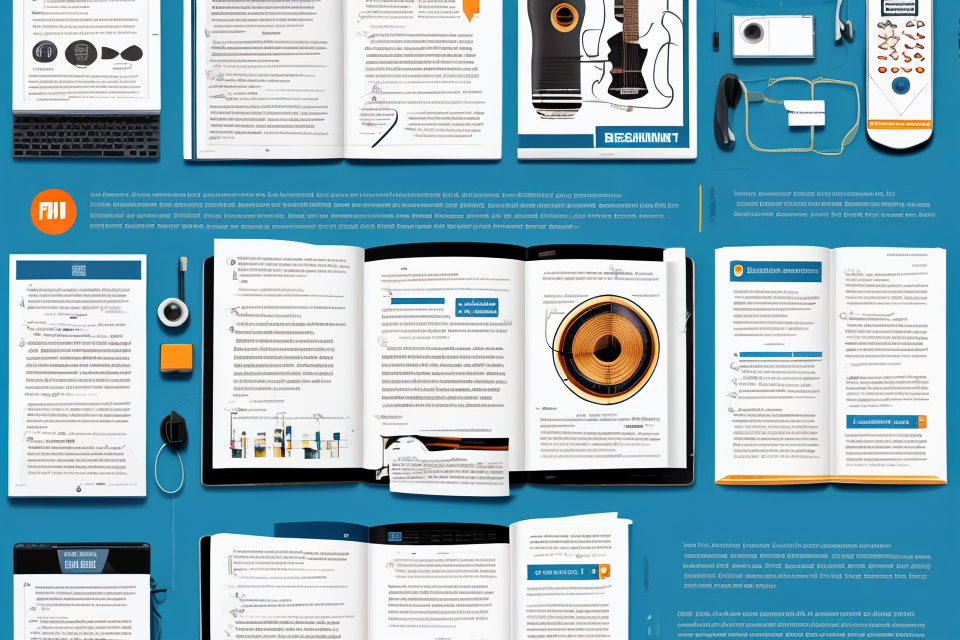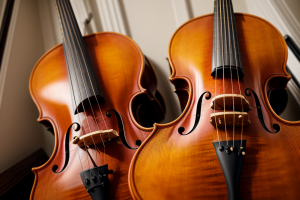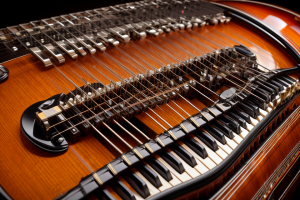
Are you a musician looking to fine-tune your instrument? Then you’ve come to the right place! This guide will provide you with a comprehensive understanding of the different techniques and devices used for instrument tuning. From the traditional tuning forks to the latest digital tuners, we’ll explore the advantages and disadvantages of each method, helping you find the perfect tool for your needs. So, whether you’re a beginner or a seasoned pro, get ready to learn the ultimate guide to instrument tuning!
Choosing the Right Instrument Tuning Device
Factors to Consider
When selecting an instrument tuning device, there are several factors to consider. These factors include accuracy, ease of use, compatibility with your instrument, and additional features.
Accuracy
The accuracy of an instrument tuning device is critical as it determines how close your instrument will be tuned to the correct pitch. It is important to choose a device that is highly accurate to ensure that your instrument is tuned correctly.
Ease of Use
An instrument tuning device should be easy to use, even for those who are not musically inclined. Look for a device that is straightforward to operate and does not require extensive technical knowledge.
Compatibility with Your Instrument
The compatibility of an instrument tuning device with your instrument is also an essential factor to consider. Some devices are designed for specific instruments, such as guitar tuners, while others are designed for multiple instruments, such as chromatic tuners. Ensure that the device you choose is compatible with your instrument.
Additional Features
Some instrument tuning devices come with additional features that can be useful for musicians. These features may include a metronome, a tuner that can be used for live performances, or the ability to store multiple tunings. Consider whether any additional features would be beneficial for your specific needs.
By taking these factors into account, you can choose the right instrument tuning device for your needs and ensure that your instrument is always in tune.
Types of Instrument Tuning Devices
Instrument tuning devices play a crucial role in ensuring that your instrument produces the desired sound. There are several types of instrument tuning devices available in the market, each with its unique features and benefits. Here are some of the most common types of instrument tuning devices:
- Digital Tuners
Digital tuners are among the most popular instrument tuning devices. They are affordable, easy to use, and provide accurate tuning. Digital tuners work by detecting the pitch of the instrument and displaying the tuning status on a screen. They are available in different types, including clip-on tuners, pedal tuners, and handheld tuners. - Stroboscopes
Stroboscopes are instrument tuning devices that use a strobe light to help musicians visualize the vibration of the instrument’s strings. They are commonly used to tune stringed instruments such as guitars, violins, and cellos. Stroboscopes can also be used to identify and correct issues such as dead spots and bowing techniques. - Oscilloscopes
Oscilloscopes are instrument tuning devices that use a visual display to show the waveform of the instrument’s sound. They are commonly used to tune electronic instruments such as keyboards, synthesizers, and drums. Oscilloscopes can also be used to diagnose and fix issues with electronic equipment. - Harmonizers
Harmonizers are instrument tuning devices that help musicians achieve perfect harmonies when playing in a group. They work by detecting the pitch of the instrument and adjusting it to match the pitch of the other instruments in the group. Harmonizers are commonly used in ensemble performances, such as choirs and orchestras.
When choosing an instrument tuning device, it is essential to consider the type of instrument you play, your level of experience, and your budget. Digital tuners are a good option for beginners, while stroboscopes and oscilloscopes are better suited for more advanced musicians. Harmonizers are ideal for musicians who perform in ensembles.
Recommended Instrument Tuning Devices
Korg TM40 Tuner Meter
The Korg TM40 Tuner Meter is a versatile and reliable instrument tuning device that is suitable for a wide range of instruments, including guitars, basses, violins, and cellos. It features a large, easy-to-read display that shows the pitch, note name, and tuning status, as well as a calibration function that allows you to adjust the tuning for your specific instrument. The TM40 also has a built-in metronome and a range of sound generation functions, including a variety of tuning modes and a reference tone function.
Snark SN-8H Harmonic Tuner
The Snark SN-8H Harmonic Tuner is a compact and affordable instrument tuning device that is designed specifically for chromatic tuning. It features a large, easy-to-read display that shows the pitch, note name, and tuning status, as well as a variety of tuning modes, including equal temperament, just intonation, and all-in-tune. The SN-8H also has a built-in mic that allows you to tune your instrument silently, as well as a variety of sound generation functions, including a reference tone function.
Boss TU-3 Chromatic Tuner
The Boss TU-3 Chromatic Tuner is a professional-grade instrument tuning device that is designed for a wide range of instruments, including guitars, basses, violins, and cellos. It features a large, easy-to-read display that shows the pitch, note name, and tuning status, as well as a variety of tuning modes, including chromatic, guitar, bass, violin, and cello. The TU-3 also has a built-in mic that allows you to tune your instrument silently, as well as a variety of sound generation functions, including a reference tone function and a variety of metronome functions.
Strobostomp Plus by Red Wymar
The Strobostomp Plus by Red Wymar is a unique instrument tuning device that uses a strobe light to visually show you the pitch of your instrument. It features a large, easy-to-read display that shows the pitch, note name, and tuning status, as well as a variety of tuning modes, including chromatic, guitar, bass, violin, and cello. The Strobostomp Plus also has a built-in metronome and a variety of sound generation functions, including a reference tone function and a variety of drum and percussion sounds. It is a great option for musicians who prefer a more visual approach to tuning.
Proper Techniques for Tuning Your Instrument
Importance of Accurate Tuning
Accurate tuning is crucial for a variety of reasons, all of which are essential to the quality of sound you produce. Here are some key points to consider:
- Affects Sound Quality: The pitch at which your instrument is tuned has a significant impact on the quality of sound it produces. If your instrument is not properly tuned, it can result in a dull, lifeless sound that lacks resonance and clarity. Accurate tuning, on the other hand, can bring out the best in your instrument, producing a rich, full-bodied sound that is pleasing to the ear.
- Preserves Instrument Durability: In addition to affecting sound quality, accurate tuning is also important for preserving the durability of your instrument. If your instrument is consistently played out of tune, it can put unnecessary strain on the strings and other components, leading to premature wear and tear. By tuning your instrument regularly and accurately, you can help extend its lifespan and keep it in good condition.
- Enhances Performance: Accurate tuning is also important for enhancing your performance as a musician. If your instrument is not properly tuned, it can be difficult to play in tune with other musicians or to achieve the desired sound. By tuning your instrument accurately, you can ensure that it is in harmony with other instruments and that you are able to produce the sound you want. This can help you to perform at your best and achieve the desired results in your music.
Warm-Up and Cool-Down Techniques
- Prevents Damage to Instrument
- Increases Longevity
- Improves Tone Quality
As a musician, it is important to take proper care of your instrument to ensure it remains in good condition and continues to produce high-quality sound. One of the most effective ways to do this is by implementing warm-up and cool-down techniques before and after each playing session.
Warm-up techniques involve gradually increasing the intensity and duration of your playing to prepare your instrument for use. This can help to prevent damage to the instrument and increase its longevity by allowing it to adjust to changes in temperature and humidity. Additionally, warming up can help to improve the tone quality of your instrument by allowing the wood to expand and settle into its optimal playing condition.
Cool-down techniques involve gradually decreasing the intensity and duration of your playing to allow your instrument to return to its optimal condition. This can help to prevent damage to the instrument by reducing the risk of sudden changes in temperature or humidity causing cracks or other damage. Additionally, cooling down can help to improve the tone quality of your instrument by allowing the wood to contract and return to its natural state.
Overall, implementing warm-up and cool-down techniques can help to ensure that your instrument remains in good condition and continues to produce high-quality sound for years to come.
Common Tuning Techniques
When it comes to tuning your instrument, there are several common techniques that you can use to achieve the desired sound. These techniques include:
- Open Tuning: This technique involves tuning your instrument to a specific open chord. This can be useful if you want to create a particular sound or mood in your music.
- Drop Tuning: This technique involves lowering the pitch of your instrument by a whole step or more. This can give your music a heavier, more aggressive sound.
- Alternate Tuning: This technique involves tuning your instrument to a non-standard tuning. This can create unique and interesting sounds, but it can also make it more difficult to play your instrument.
- Standard Tuning: This is the most common tuning for most instruments, and it involves tuning your instrument to a specific set of notes. This is typically the tuning used in most popular music.
It’s important to note that these techniques are not mutually exclusive, and you can often combine them to create unique and interesting sounds. However, it’s also important to remember that proper tuning is essential for getting the best sound out of your instrument, so it’s worth taking the time to learn how to tune it properly.
Additional Tips for Effective Instrument Tuning
Regular Maintenance
One of the most important things you can do to ensure that your instrument stays in tune is to maintain it regularly. This means cleaning and inspecting your instrument on a regular basis, as well as making any necessary adjustments to the tuning pegs or other components. By keeping your instrument in good condition, you can help prevent problems that could affect its tuning.
Humidity Control
Humidity can have a big impact on the tuning of your instrument. Changes in humidity can cause the wood to expand or contract, which can affect the tuning of your strings. To help maintain consistent humidity levels, it’s a good idea to use a humidifier or dehumidifier in the room where you keep your instrument. This can help prevent sudden changes in tuning that can be frustrating and time-consuming to correct.
Proper Storage
In addition to controlling humidity levels, proper storage can also help maintain the tuning of your instrument. It’s important to store your instrument in a safe and secure location, away from direct sunlight and extreme temperatures. You should also avoid storing your instrument in its case for long periods of time, as this can lead to damage and other problems. Instead, consider taking it out of the case and displaying it in a safe location when you’re not using it. This can help prevent damage and ensure that your instrument stays in good condition.
Maintaining and Storing Your Instrument
Importance of Regular Maintenance
Regular maintenance is crucial for any musical instrument, as it not only extends the lifespan of the instrument but also improves its performance and preserves its resale value. Here are some of the key reasons why regular maintenance is so important:
Extends Instrument Lifespan
Regular maintenance helps to keep your instrument in good condition, which can extend its lifespan significantly. Neglecting basic maintenance tasks, such as tuning and cleaning, can lead to wear and tear on the instrument, causing it to age faster and potentially leading to costly repairs or replacements. By regularly maintaining your instrument, you can prevent these issues and keep it in top condition for years to come.
Improves Performance
Regular maintenance can also improve the performance of your instrument. For example, regular tuning can help to ensure that your instrument stays in tune longer, making it easier to play and more enjoyable to listen to. Additionally, regular cleaning can help to prevent buildup of dirt and debris, which can affect the sound quality of your instrument. By regularly maintaining your instrument, you can ensure that it performs at its best at all times.
Preserves Resale Value
Finally, regular maintenance can help to preserve the resale value of your instrument. When it comes time to sell your instrument, its condition and overall appearance can have a significant impact on its value. By regularly maintaining your instrument, you can help to keep it in good condition and prevent any damage that could lower its value. This can help you to get a better price when it comes time to sell, ensuring that you get the most value out of your investment.
Regular Maintenance Tasks
Proper maintenance is crucial to ensure that your instrument stays in good condition and continues to produce high-quality sound. Here are some regular maintenance tasks that you should perform on your instrument:
- Cleaning: Dirt, dust, and debris can accumulate on your instrument over time, so it’s important to clean it regularly. Use a soft, dry cloth to wipe down the instrument’s surface, and avoid using any harsh chemicals or cleaners that could damage the finish. If your instrument has moving parts, make sure to clean them thoroughly and lubricate them as needed.
- Lubricating: Moving parts in your instrument, such as tuning pegs or hinges, can become stiff or sticky over time. Applying a lubricant such as oil or grease can help keep them smooth and functioning properly. Be sure to use a lubricant that is safe for your instrument and avoid over-lubricating, which can attract dirt and grime.
- Inspecting for Damage: Before each use, inspect your instrument for any signs of damage, such as cracks or loose parts. If you notice any damage, it’s important to address it immediately to prevent further damage and ensure that your instrument continues to function properly.
- Replacing Parts as Needed: Over time, some parts of your instrument may wear out or become damaged and need to be replaced. If you notice any issues with your instrument’s performance, such as poor tuning or intonation problems, it may be a sign that a part needs to be replaced. Consult with a professional instrument repair person to determine what parts need to be replaced and how to properly install them.
Proper Storage Techniques
Protecting Your Instrument from Temperature and Humidity Changes
One of the most important aspects of proper instrument storage is protecting it from temperature and humidity changes. Instruments are sensitive to changes in temperature and humidity, which can cause them to expand or contract, leading to misalignment or damage. To protect your instrument from these changes, it’s essential to store it in a stable environment with consistent temperature and humidity levels.
A good rule of thumb is to store your instrument in a room with a temperature between 60-70°F (15-21°C) and a relative humidity of 40-50%. If you live in an area with extreme temperatures or humidity levels, consider investing in a humidifier or dehumidifier to maintain optimal conditions.
Choosing the Right Case or Storage Container
Another important aspect of proper instrument storage is choosing the right case or storage container. Instruments need to be protected from physical damage, as well as temperature and humidity changes. When choosing a case or storage container, consider the following factors:
- Durability: The case or container should be sturdy and well-made to protect your instrument from physical damage.
- Insulation: The case or container should provide insulation to protect your instrument from temperature and humidity changes.
- Fit: The case or container should fit your instrument snugly to prevent it from moving around and getting damaged.
- Accessibility: The case or container should be easy to access to allow you to inspect and maintain your instrument regularly.
There are many different types of cases and storage containers available, including hardshell cases, gig bags, and foam-lined cases. Choose the one that best suits your needs and budget.
Ensuring Proper Support and Stability
Finally, it’s important to ensure that your instrument is properly supported and stable when storing it. This will help prevent it from getting damaged or misaligned. If you’re storing your instrument in its case or storage container, make sure it’s lying flat and stable. If you’re storing it outside of its case, make sure it’s resting on a sturdy, flat surface.
Additionally, if you’re storing your instrument for an extended period of time, consider using a humidifier or dehumidifier to maintain optimal humidity levels. This will help prevent your instrument from drying out or becoming warped.
Overall, proper storage techniques are crucial for maintaining the condition and performance of your instrument. By protecting it from temperature and humidity changes, choosing the right case or storage container, and ensuring proper support and stability, you can help extend the life of your instrument and keep it in top condition.
Troubleshooting Common Instrument Tuning Issues
Common Tuning Problems
Instrument tuning is a crucial aspect of playing any musical instrument. A poorly tuned instrument can lead to a lackluster performance and make it difficult to play in tune with other musicians. In this section, we will discuss some common tuning problems that musicians may encounter and provide solutions for addressing them.
Flat or Sharp Pitch
Flat or sharp pitch is one of the most common tuning problems that musicians face. This occurs when the strings are too loose or too tight, causing the pitch to be off. Flat pitch means that the string is too loose, and sharp pitch means that the string is too tight.
To fix this problem, musicians can use a tuner to adjust the tension of the strings until they are in tune. It is important to note that the strings should be tight enough to stay in tune but not so tight that they are difficult to play.
Slipped Tuning
Slipped tuning occurs when the strings slip out of tune due to changes in temperature, humidity, or playing style. This can be frustrating for musicians who have carefully tuned their instruments before playing.
To prevent slipped tuning, musicians can use a variety of techniques, such as using a tuner to check the tuning regularly, using a locking tuning mechanism, or using a string winder to tighten the strings evenly.
Binding or Rusty Tuning Keys
Binding or rusty tuning keys can make it difficult to tune an instrument properly. Binding occurs when the keys become stuck together, preventing them from moving smoothly. Rusty keys can also make it difficult to turn them, which can affect the tuning of the instrument.
To address this problem, musicians can clean the keys using a tuning key lubricant or a cloth soaked in rubbing alcohol. In cases where the keys are badly rusted or bound, it may be necessary to replace them entirely.
Effective Solutions for Common Tuning Issues
Properly Adjusting Tuning Keys
Tuning keys are essential for adjusting the tension of strings and ensuring proper tuning. Over time, tuning keys can become loose or corroded, causing tuning issues. To properly adjust tuning keys, follow these steps:
- First, make sure the key is tightening and loosening smoothly without sticking or slipping.
- If the key is sticking, clean it with a cloth and lubricate it with a small amount of oil.
- If the key is slipping, try tightening the nut or adding a washer under the nut to increase friction.
Applying Lubrication to Tuning Keys and Pins
Lubrication is essential for smooth and effortless tuning. Over time, tuning keys and pins can become dry and sticky, causing tuning issues. To apply lubrication, follow these steps:
- Use a cloth to clean the tuning keys and pins of any dirt or debris.
- Apply a small amount of lubricant, such as oil or wax, to the tuning keys and pins.
- Use a cloth to wipe away any excess lubricant.
Checking for and Adjusting Intonation
Intonation refers to the correct tuning of each string on the instrument. Poor intonation can cause the instrument to sound out of tune, even when it is properly tuned. To check for and adjust intonation, follow these steps:
- Check the intonation of each string by playing a harmonic on the 12th fret and comparing it to a reference pitch.
- Adjust the intonation screws on the bridge or nut to adjust the string’s length and tuning.
- Repeat the process until all strings are in tune.
By following these effective solutions for common tuning issues, you can ensure that your instrument stays in tune and sounds its best.
FAQs
1. What is the best device for tuning an instrument?
There is no one-size-fits-all answer to this question, as the best device for tuning an instrument will depend on a variety of factors, including the type of instrument being tuned, the player’s personal preference, and the level of accuracy required. Some popular devices for tuning instruments include digital tuners, tuning forks, and electronic tuners. Digital tuners are often preferred for their accuracy and ease of use, while tuning forks are a more traditional option that can be particularly useful for tuning to a specific pitch. Electronic tuners are another option that can be attached to the instrument to provide a more accurate reading of the pitch.
2. Can I tune my instrument without a device?
While it is possible to tune an instrument without a device, it can be a challenging task that requires a lot of time and practice. Without a device, you will need to rely on your ear to determine if the pitch is correct. This can be particularly difficult for instruments with multiple strings or registers, as it can be difficult to hear the individual pitches clearly. Using a device can help ensure that your instrument is properly tuned, saving you time and effort in the long run.
3. How do I choose the right device for tuning my instrument?
When choosing a device for tuning your instrument, it is important to consider the type of instrument you are playing, the level of accuracy you need, and your personal preferences. Digital tuners are often preferred for their accuracy and ease of use, while tuning forks are a more traditional option that can be particularly useful for tuning to a specific pitch. Electronic tuners are another option that can be attached to the instrument to provide a more accurate reading of the pitch. It is also important to consider the price and durability of the device, as well as any additional features that may be useful, such as a metronome or recording capabilities.
4. How do I use a digital tuner to tune my instrument?
Using a digital tuner to tune your instrument is a simple process. First, plug the tuner into a power source or turn it on if it is a battery-powered model. Then, select the instrument type and tuning mode on the tuner and play the appropriate note on your instrument. The tuner will display the pitch of the note and whether it is too high, too low, or perfectly in tune. Adjust the pitch of the note until it is in tune, and repeat the process for each string or register of your instrument. It is important to use a clean and stable tuning environment to ensure accurate readings from the tuner.






